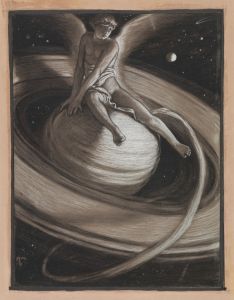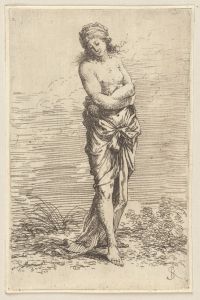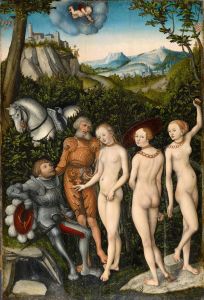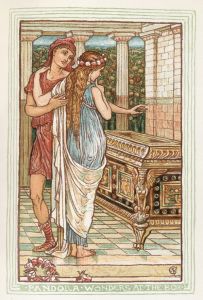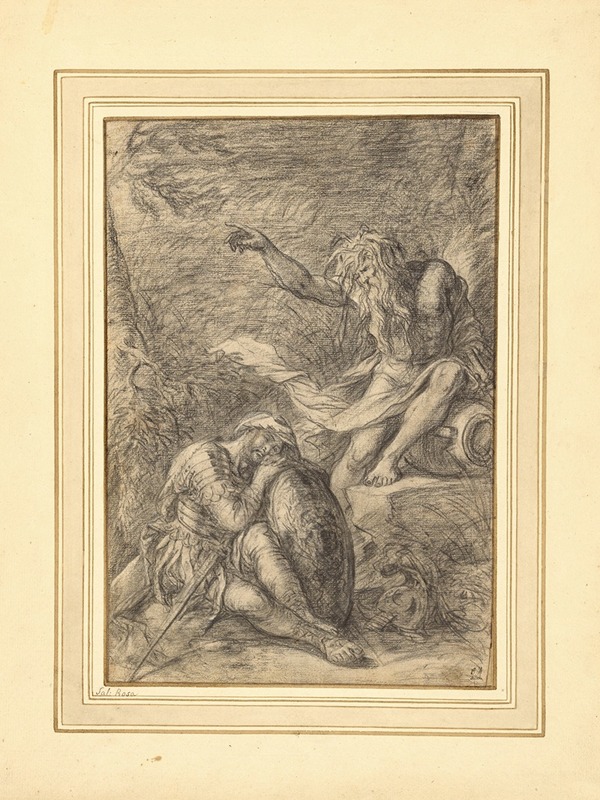
The Dream of Aeneas
A hand-painted replica of Salvator Rosa’s masterpiece The Dream of Aeneas, meticulously crafted by professional artists to capture the true essence of the original. Each piece is created with museum-quality canvas and rare mineral pigments, carefully painted by experienced artists with delicate brushstrokes and rich, layered colors to perfectly recreate the texture of the original artwork. Unlike machine-printed reproductions, this hand-painted version brings the painting to life, infused with the artist’s emotions and skill in every stroke. Whether for personal collection or home decoration, it instantly elevates the artistic atmosphere of any space.
Salvator Rosa, an Italian Baroque painter, is known for his dramatic and often unconventional landscapes, as well as his historical and allegorical paintings. However, there is no widely recognized painting titled "The Dream of Aeneas" attributed to Salvator Rosa. Rosa's oeuvre primarily includes works that reflect his interest in the sublime and the picturesque, often depicting wild landscapes, bandits, and scenes of witchcraft or mythology.
Rosa was born in 1615 in Arenella, near Naples, and was active during a period when the Baroque style was flourishing in Italy. He was a versatile artist, also known for his work as a poet, actor, and musician. His paintings often convey a sense of drama and emotion, achieved through his use of bold contrasts, dynamic compositions, and a dark, moody palette.
One of Rosa's notable contributions to art is his approach to landscape painting. Unlike many of his contemporaries who focused on idealized and pastoral scenes, Rosa's landscapes are often rugged and untamed, reflecting the power and unpredictability of nature. This approach has led some art historians to consider him a precursor to the Romantic movement, which would emerge in the late 18th and early 19th centuries.
Rosa's interest in mythology and classical themes is evident in several of his works, although specific details about a painting titled "The Dream of Aeneas" are not documented in major art historical sources. Aeneas, a Trojan hero and a central character in Virgil's epic poem "The Aeneid," has been a subject of interest for many artists over the centuries. The story of Aeneas includes themes of duty, piety, and destiny, as he journeys from the ruins of Troy to eventually found the city that would become Rome.
While Rosa may have been inspired by such classical themes, his known works do not include a painting specifically titled "The Dream of Aeneas." It is possible that such a painting could exist in a private collection or under a different title, but without verifiable sources or documentation, it remains speculative.
Rosa's legacy is marked by his bold and individualistic style, which set him apart from many of his contemporaries. His works continue to be studied for their innovative approach to composition and their emotional intensity. Despite the lack of information on "The Dream of Aeneas," Rosa's impact on the art world remains significant, influencing generations of artists who followed.
In summary, while Salvator Rosa is a well-documented artist with a rich body of work, there is no confirmed painting titled "The Dream of Aeneas" attributed to him. His contributions to Baroque art and his distinctive style continue to be appreciated and studied by art historians and enthusiasts alike.





